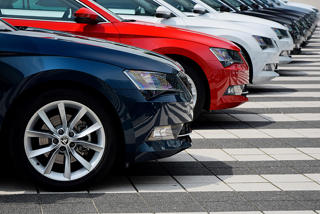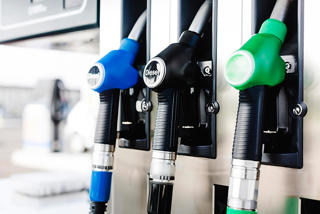The amount of cash collected by the Treasury in company car tax has increased by more than 24% year-on-year – some £360 million – yet the number of employees receiving the benefit fell by 20,000 over the same period, newly-released data shows.
The provisional figures, from HMRC, highlight how the Government is raising record revenues from the company car market by imposing higher taxes on drivers.
The data shows that there were 940,000 employees paying benefit-in-kind (BIK) tax on a company car in 2016/17 – a 2% fall on the 960,000 recorded the previous financial year.
The amount of national insurance contributions (NICs) paid by employers on company cars also increased. Employers paid £630m in 2016/17, compared to £600m the previous year – up 5%.
BIK tax and NICs were collectively worth £2.48 billion to the Treasury, compared to £2.09bn in 2015/16 – an increase of 19% or £390m.
Compare that to 2012/13, when BIK and NICs were worth £1.75bn to the Treasury – some £730m less – yet the number of employees with a company car was exactly the same at 940,000.
The record figure of £2.48bn means that the average annual tax yield on a company car was £2,638 in 2016/17, compared to £2,166 in 2015/16, a 22% or £472 year-on-year increase.
At the start of the decade (2009/10), a company car was worth, on average, £1,680 in BIK and NICs revenues to the Treasury, some £1.63bn (£850m less).
The higher tax take between 2015/16 and 2016/17 can, in part, be explained by the increase reported in the taxable value over the same period.
The taxable value of the company car benefit was worth £4.57bn, up from £4.32bn the previous year, according to HMRC figures.
However, the vast majority on the revenue increase has been down to the annual two percentage point increase in BIK rates, first introduced in 2015-16 (in previous years there had typically been a one percentage point increase).
Furthermore, these higher incremental increases in BIK would have been decided in combination with the removal of the three percentage point diesel supplement, which was announced in the 2012 Budget and expected to take effect from April 2016.
However, shortly before it was due to be axed, the then Chancellor, George Osborne, announced he was delaying its removal until 2021 “in light of the slower-than-expected introduction of more rigorous EU emissions testing” (fleetnews.co.uk, November 25, 2015).
Two years later, current Chancellor, Philip Hammond, announced he was raising it to 4% from April this year (fleetnews.co.uk, November 22, 2017).
Analysis of HMRC data for 2016/17, when the diesel supplement should have been removed, shows that the annual average company car tax paid by drivers was £1,968 (£164 per month). That was 27% higher than the £1,552 (£129 per month) paid in 2015/16.
Even the fact that company car drivers are choosing cars with lower CO2 values has failed to thwart the increase in revenues.
In 2015/16, the last year for which figures are available from HMRC, 83% of company cars emitted 134g/km of CO2 or less, an increase from 77% of cars in 2014-15.
There is an established strong reducing trend in the level of emissions. In 2002-03, 58% of company cars had emission values in excess of 165g/km; in 2015-16 this had reduced to just 3%.
The emission-dependent scale of appropriate percentages for company cars is one of many factors incentivising the manufacture and purchase of low emission vehicles, says HMRC.
For more analysis, see this week's Fleet News.























The Engineer - 09/07/2018 16:28
It would be good to plot that on a graph alongside the average rise in earnings.. print it out and all send it to the relevant minister, if there are any ministers left by the end of the week! - still we all love a pay cut!